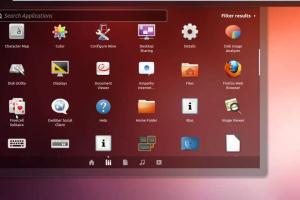The Ultimate Guide to Using Linux for Beginners and Advanced Users

-
Quick Links:
- 1. Introduction to Linux
- 2. Choosing a Linux Distribution
- 3. Installing Linux
- 4. Basic Linux Commands
- 5. Understanding the Linux File System
- 6. Advanced Usage: Shell Scripting and More
- 7. Installing Software on Linux
- 8. Securing Your Linux System
- 9. Engaging with the Linux Community
- 10. Real-World Case Studies
- 11. FAQs
1. Introduction to Linux
Linux is an open-source operating system that has gained immense popularity due to its flexibility, security, and community-driven development. Unlike proprietary systems like Windows or macOS, Linux allows users to modify the source code and tailor it to their needs. This guide is designed to help both beginners and advanced users navigate the world of Linux.
2. Choosing a Linux Distribution
There are numerous distributions (or "distros") of Linux, each catering to different user needs. Here are some popular options:
- Ubuntu: Ideal for beginners, with a user-friendly interface and extensive community support.
- Fedora: Offers the latest features and is perfect for developers.
- Debian: Known for its stability and robust package management.
- Arch Linux: Tailored for advanced users who want complete control over their system.
- Linux Mint: A great choice for those transitioning from Windows.
3. Installing Linux
Installing Linux is a straightforward process. Here’s a step-by-step guide:
- Download the ISO file of your chosen distribution from its official website.
- Create a bootable USB drive using tools like Rufus or Etcher.
- Boot your computer from the USB drive.
- Follow the installation wizard, selecting your preferences for partitioning, language, and so on.
- Once installed, remove the USB drive and restart your computer.
4. Basic Linux Commands
Understanding basic commands is essential for navigating Linux effectively. Here are some common commands:
| Command | Description |
|---|---|
ls |
Lists files and directories in the current directory. |
cd |
Changes the current directory. |
cp |
Copies files or directories. |
mv |
Moves or renames files or directories. |
rm |
Removes files or directories. |
5. Understanding the Linux File System
The Linux file system is structured in a hierarchical manner. Here are some key directories you should know:
- /home: Contains user directories.
- /etc: Contains configuration files.
- /var: Contains variable data like logs.
- /usr: Contains user applications, libraries, and documentation.
6. Advanced Usage: Shell Scripting and More
Shell scripting allows users to automate tasks in Linux. Here’s a simple example:
#!/bin/bash
echo "Hello, Linux!"
Save this as hello.sh, change its permissions with chmod +x hello.sh, and run it with ./hello.sh.
7. Installing Software on Linux
Installing software can be done using package managers like apt for Debian-based systems or yum for Red Hat-based systems. For example:
sudo apt install firefox8. Securing Your Linux System
Security is paramount in Linux. Here are some tips:
- Regularly update your system using
sudo apt update && sudo apt upgrade. - Use strong passwords and consider enabling two-factor authentication.
- Configure a firewall using tools like
ufw.
9. Engaging with the Linux Community
Getting involved with the Linux community can enhance your learning experience. Consider joining:
- Online forums like LinuxQuestions
- Subreddits like r/linux
- Local Linux User Groups (LUGs).
10. Real-World Case Studies
Case Study 1: A local university switched to Linux to cut costs on licensing fees. They reported a 30% decrease in IT expenditures.
Case Study 2: A small business used Linux to create a secure server environment, leading to enhanced data protection and reduced downtime.
11. FAQs
1. Is Linux free to use?
Yes, Linux is open-source and free to use, modify, and distribute.
2. Can I run Windows applications on Linux?
Yes, you can use compatibility layers like Wine or run a virtual machine.
3. How can I learn Linux quickly?
Practice regularly, join online courses, and engage with the community.
4. What are some common Linux distributions?
Ubuntu, Fedora, Debian, and Linux Mint are popular choices.
5. How do I update my Linux system?
Use the command sudo apt update && sudo apt upgrade for Debian-based systems.
6. Is Linux secure?
Linux is generally considered more secure than other operating systems, but it still requires regular updates and good security practices.
7. What is a Linux terminal?
The terminal is a command-line interface that allows users to interact with the system using text commands.
8. Can I customize my Linux desktop environment?
Yes, Linux is highly customizable, allowing users to change themes, icons, and whole desktop environments.
9. What is the Linux kernel?
The Linux kernel is the core component of the operating system, managing hardware and system resources.
10. How can I install new software on Linux?
Use the package manager for your distribution (e.g., apt, yum, etc.) or download from the official site.